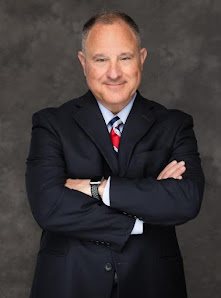Matthew T. Mangino
GateHouse Media
September 16, 2017
How did a statement made 30 years ago, in a magazine article
with no supporting documentation, set in motion a series of some of the most
draconian laws in U.S. history?
In 1986, Robert Longo, a prison sex offender treatment
counselor in Oregon, and Ronald Wall, a therapist who worked with him, wrote in
an issue of Psychology Today that “Most untreated sex offenders released from
prison go on to commit more offenses ... Indeed, as many as 80 percent do.”
Psychology Today, although a respected publication, isn’t
exactly Time Magazine when it comes to mainstream distribution and circulation.
Yet, that quote took hold with the criminal justice system and among lawmakers,
policymakers and decision makers across the country.
The claim really gained traction in 2002. That year, U.S.
Supreme Court Justice Anthony M. Kennedy wrote in a decision that upheld a
mandatory prison therapy program for sex offenders, “the rate of recidivism of
untreated offenders has been estimated to be as high as 80 percent,” a number
he called “frightening and high.”
The following year, Kennedy repeated that claim in a case
which upheld retroactive application of registration requirements for sex
offenders. As of 2015, according to Reason Magazine, Kennedy’s phrase has been
reused in more than 100 opinions and briefs filed with the court.
According to Reason, there was never any evidence to support
the assertion, and research conducted during the period within which it
proliferated indicated that it was not even remotely true. “Nearly every study
-- including those by states as diverse as Alaska, Nebraska, Maine, New York
and California as well as an extremely broad one by the federal government that
followed every offender released in the United States for three years -- has
put the three-year recidivism rate for convicted sex offenders in the low
single digits, with the bulk of the results clustering around 3.5 percent.”
What has been the result of broad acceptance of this
markedly misinformed data? According to the New York Times, for the past 24
years, Minnesota has detained sex offenders released from prison in a
“therapeutic program.” The “patients” are kept in locked cells, transported
outside the facility in handcuffs and leg irons, and subjected to a regimen
that looks, sounds and smells just like that of a prison.
But unlike prison, the therapeutic program -- which aims to
teach the patients to control their sexual impulses and was initially designed
to last from two to four years -- has no fixed end date. Rather, program
administrators decide which patients are safe enough to release. According to
the Times, in the 24 years the program has existed, not a single “patient” has
ever been fully released.
Nearly 5,400 people are currently civilly committed in
sexually violent predator programs in 20 states and by the federal Bureau of
Prisons. According to The Marshall Project, 13 states allow this practice for
people who committed their crimes as juveniles. Despite having no adult
convictions, these young people are held years into adulthood.
While civil commitment is perhaps the most extreme example
of punishments imposed on people convicted of sex crimes, it is by no means the
only one. Driven by a pervasive fear of sexual predators, and facing no
discernible opposition, according to the New York Times, “politicians have
become ever more inventive in dreaming up ways to corral and marginalize those
convicted of a sex related crime.”
On Sept. 25, the Supreme Court will have a chance to take a
step toward setting the record straight. They will decide whether to hear two
cases involving offenders who claim new sex offender registration requirements
are punishing them a second time for a single offense.
Matthew T. Mangino is of counsel with Luxenberg, Garbett,
Kelly & George P.C. His book The Executioner’s Toll, 2010 was released by
McFarland Publishing. You can reach him at www.mattmangino.com and follow him
on Twitter @MatthewTMangino.
To visit the column CLICK HERE








No comments:
Post a Comment